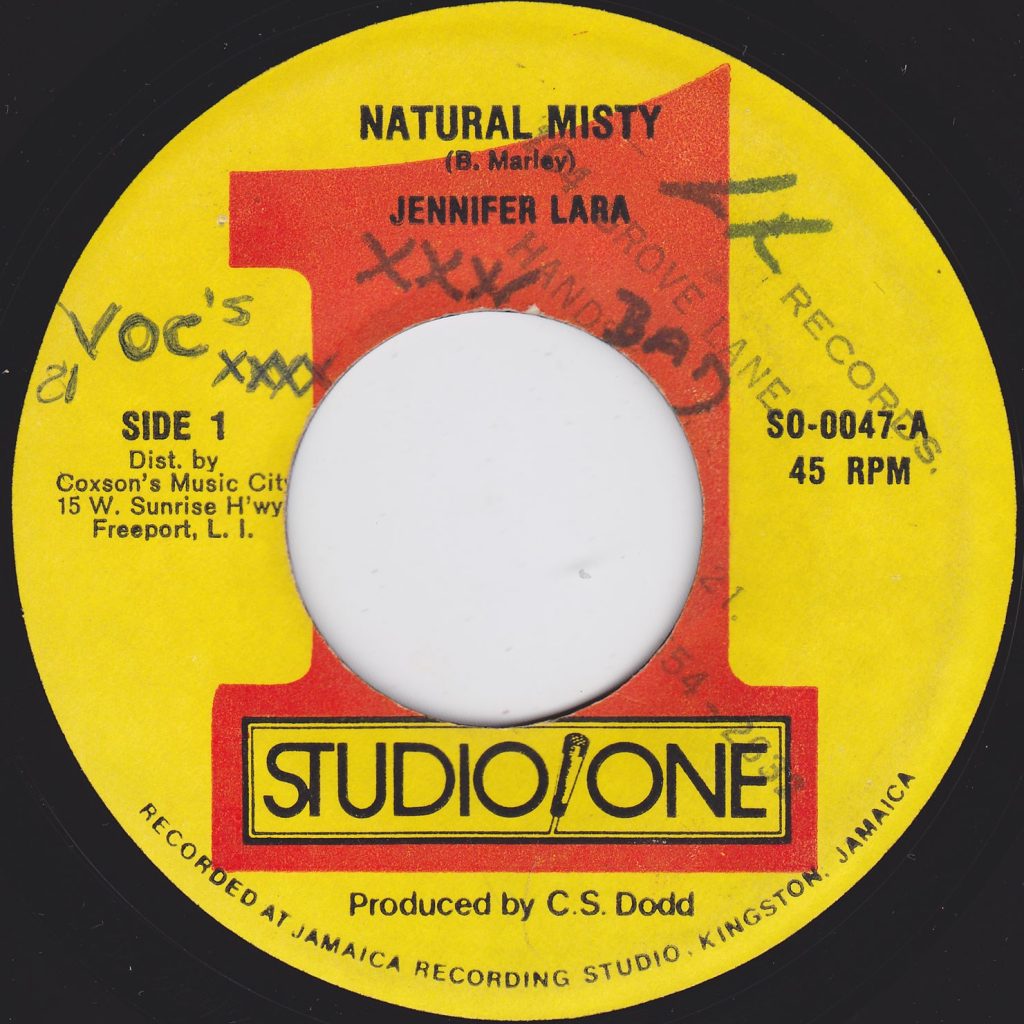Jennifer Lara’s soulful breakthrough album (released in 1974) is a timeless piece of Jamaican music. The soft but acute grooves sound baked. It feels like they left every copy of this LP in the island sun for hours before distribution. This ingenious interpretation of “American” music is marvelous in its own right. When ska took Jamaica by storm, there were ripples throughout the island.

Ska music — pioneered by Clement “Coxsone” Dodd and other young DJs in the 1960’s — infused American jazz with the native soul of Jamaica’s traditional music (calypso and mento). These curious discographers cultivated unique, outdoor communal spaces for music lovers called “sound systems.” They played the two genres side by side, gradually dissolving it into a homogeneous sound. A sound system’s success was judged by a DJ, or “selector’s” ability to curate music in a seamless way. Eventually, ska music was conceived from the thinning of the boundary between Jamaican and American music. DJs have always done this — hedonistic party settings (jazz clubs, discotheques, and nightclubs) are well known for pushing the boundaries of music through the intermingling of genres. It’s almost a trans-historical phenomenon.

When Dodd’s sound system, “Sir Coxsone the Downbeat” started to pop off, he started recording his own music. He formally Studio One came to fruition in 1954, artists sung over ska instrumentals. Ska took jazz, and moved every guitar chord a half beat to the right, making the beats swing with inimitable rhythm. It made jazz uniquely Jamaican. These staccato guitar stabs were called “skanks,” and they were tactically placed on every “and” or up beat. “Ska” is an apt name — it refers to the “skat!” “skat!” “skat!” sound guitars would make on these songs.
In 1974, Jennifer Lara’s soothing voice finally graced Dodd’s production. Her debut album has its roots in the movement to “slow down ska,” in terms of literal tempo and its growth in popularity. The “selectors” and people of sound system culture felt like the genre was straying from its roots as more highbrow societies in Jamaica adopted the sound. Ska was repackaged in the form of “rocksteady,” a danceable and groovier form of ska. Ms. Lara showed Jamaica its soul again.
I love this album. It’s probably the most heartfelt piece of soul that I’ve heard in awhile. At certain points, Lara sings way too loud for ‘70s audio equipment to process, and the whole mix clips into the red. Every arpeggiated, bouncy bass-line thumps through the grainy soundscapes on each song. The bass sections are aggressive but sparsely distributed to not overwhelm the precise instrumentation. An album all about the ups and downs of love needs to embody love. It needs to feel harmonious and easy on the ears. This is more than achieved here. There are 4 songs with the word “love” in the title, and every song is saccharine-sweet. Jennifer Lara makes desperate pining a beautiful thing.
I had a strange summer, where I was re-evaluating romantic love and weighing whether or not I’d choose to leave space in my life for it. This album coached me through my confusion without persuading me in any one direction, because as much as it praises love, it talks about the hardship of an unrequited relationship, and the pain that endures when you approach love selfishly. There isn’t an album I can think of that was a better fit for my condition and the season I was in.




Comments are closed.